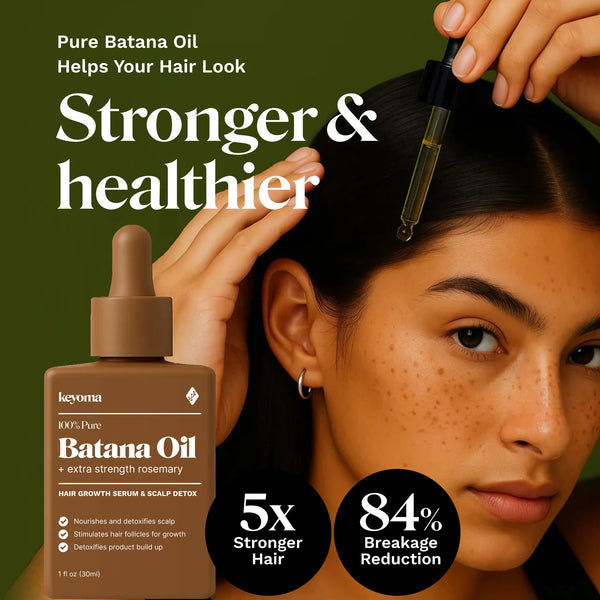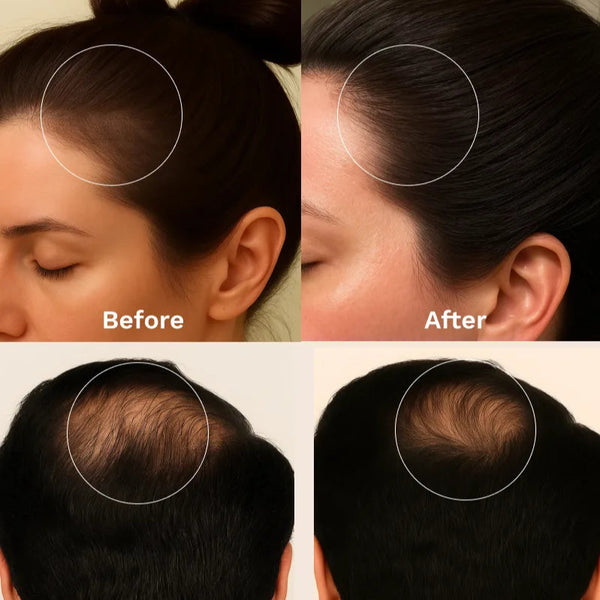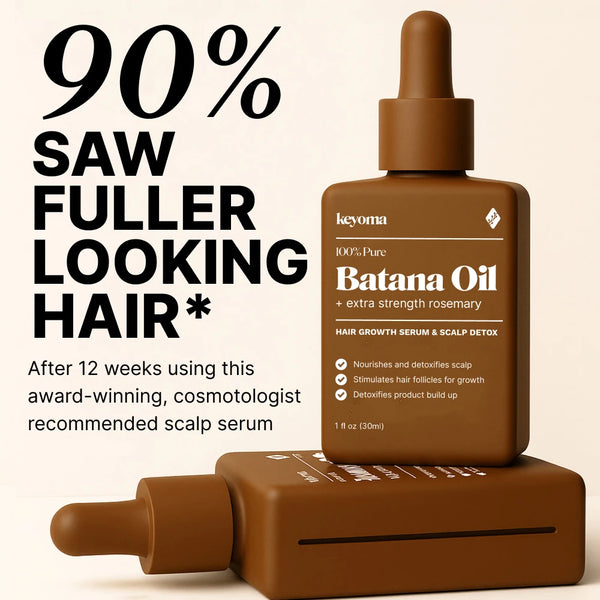In this article
Roughly one-third of women deal with hair loss (alopecia) at some point in life; among postmenopausal women, up to two-thirds notice thinning or bald areas. Because society is less accepting of hair loss in women, the impact can feel greater than it does for men. Alopecia can strongly affect your emotional health and overall quality of life.
Many factors can lead to hair loss in women, from medical issues and medicines to physical or emotional stress. If you see unusual shedding, check in with your primary care provider or a dermatologist to find the cause and discuss treatment.
You can also ask for a referral to a therapist or support group to help with the emotional side. Hair loss is frustrating, but there are more tools and resources now to help you cope.
Key Takeaways
-
Female pattern hair loss causes diffuse thinning across the scalp, starting at the part.
-
About one-third of women experience hair loss, with rates increasing after menopause.
-
Age, genetics, and androgens contribute, and hair loss usually progresses gradually over decades.
-
Diagnosis relies on history and scalp examination, treatments include minoxidil, finasteride, PRP, transplants.
What Is Female Pattern Hair Loss (FPHL)?
Female pattern hair loss (FPHL) is a specific type of diffuse hair loss seen in women with androgenetic alopecia. FPHL is common. By age 50, about 40% of women show some loss, and fewer than 45% reach 80 with a full head of hair.
In FPHL, hair thins across the scalp due to increased shedding, reduced hair volume, or both. Losing 50–100 hairs per day is normal. A different condition, chronic telogen effluvium also causes extra shedding and is often mistaken for FPHL. Distinguishing the two matters because their management is not the same.
FPHL doesn’t look like typical male pattern baldness, which often starts with a receding front hairline and progresses to a bald spot on the crown. Women rarely follow that pattern unless the body is producing excess androgens.
Causes of Female Pattern Baldness
Factors that drive female pattern baldness include:
-
Age: Risk rises with age. Female pattern baldness affects about one-third of women at some point. After menopause, roughly two-thirds have thinning or even complete loss.
-
Hormones: The hormone dihydrotestosterone (DHT) is a type of androgen. Androgens help drive puberty and physical maturation, including hair growth on the face, scalp, chest, underarms, and genitals. After menopause, your hormone levels drop, which may alter DHT activity. Medical experts and researchers think that shrinking follicles may be linked to DHT.
-
Genetics: Your risk is higher if close relatives also have hair loss.
Symptoms Linked to Female Pattern Hair Loss
Female pattern hair loss looks different from male pattern hair loss. You typically see diffuse thinning across the scalp that starts around the part. You may spot more shed hairs, a widening part, and less density along the frontal hairline. The scalp skin itself appears normal.
Loss often advances slowly over decades, though it can flare in bursts. You might go through a phase of obvious shedding, then return to a more usual rate. Over time, the change tends to become more noticeable.
A receding hairline or a true bald spot on the crown is uncommon in women, but it can occur when androgen (male hormones) levels are elevated.
How Female Pattern Hair Loss Is Diagnosed
Your doctor can usually diagnose female pattern hair loss without special tests. They’ll ask how quickly shedding started and where you’ve noticed it, then examine your hair and scalp.
If you also have acne, irregular periods or excess body hair, your doctor may order tests to check hormone levels.
If the cause isn’t clear, your doctor might also recommend taking a biopsy of the scalp to rule out other hair loss conditions.
They may refer you to a dermatologist if another skin condition is suspected.
Ludwig Scale: Stages of Female Pattern Hair Loss
Like the Norwood Scale used in men, the Ludwig Scale is a widely accepted way to classify female pattern baldness in scalp and hair studies. Dr. Erich Ludwig introduced it in 1977 to group female hair loss into three main stages that reflect progression. Treat it as a general guide—your experience may differ.

Here’s how the stages are typically described:
-
Stage 1 (Early Thinning): You’ll see a wider part through the central scalp. Overall volume may be a bit reduced, but the hairline stays intact.
-
Stage 2 (Progressive Thinning): Thinning becomes more obvious. The part widens further and progresses toward the crown . Hair can feel finer and may not hold styles as well, and you might notice more shedding with brushing or showering.
-
Stage 3 (Advanced Loss): This is the most severe stage, with marked thinning across the scalp and a clear drop in density. In some cases, the frontal area can even appear bald.
Treatment Options for Female Pattern Baldness
Many hair loss treatments exist for female pattern baldness. For me, steady use for months mattered more than switching products. Treatments may include:

-
Natural oils: Massage batana oil with rosemary into your scalp 3–4 nights a week; patch-test first and avoid applying at the same time as minoxidil.
-
Medications: Over-the-counter topicals, such as minoxidil, are usually first-line for female pattern baldness. A prescription oral medication like finasteride can also be used. Your provider may recommend pairing finasteride with ketoconazole 2% shampoo.
-
Hair transplant: A provider moves skin grafts containing healthy follicles from another body area to thinning or bald spots on your scalp.
-
Platelet-rich plasma: Your provider draws your blood, processes it, and injects it into the scalp to encourage growth.
-
Red light therapy: Low-wavelength red light is applied to the scalp to support growth.
-
Styling techniques: Certain hairstyles, wigs, or hair weaves can help camouflage thinning.
Results vary from person to person. Your healthcare provider can help you choose the option that fits you best.
Can You Prevent Female Pattern Baldness?
There’s no proven way to prevent female pattern baldness. Still, keeping your hair and body healthy may support growth. Examples include:
-
Eat enough protein, especially if you’re vegetarian or vegan. Aim for 40–60 grams daily. The Mediterranean diet rich in fruits, vegetables, and protein may help limit loss.
-
Take vitamins. Nutrients like vitamins A, B, C, D, E, plus zinc and iron, help maintain healthy hair, skin, and muscle tissue. But check with your healthcare provider first before starting any new supplements.
-
Find ways to cope with stress. Stress may contribute by increasing androgen activity.
Start Evidence-Based Female Pattern Hair Loss Care With Keyoma
Now that you know how female pattern hair loss looks, why it happens, and which treatments help at different stages, confirm your diagnosis, use evidence-based options consistently, and track progress over months. Keep care gentle by limiting traction and heat, protecting the scalp, and adjusting styling as density changes.
For a natural start with fewer side effects, or a supportive add-on to your current plan, try Keyoma’s Batana Oil with Rosemary as a daily scalp oil to add simple, nourishing moisture and everyday comfort. Start now to support the next growth cycle.
Featured Product
100% Pure Batana Oil + Rosemary
↓Best Batana Oil to Buy↓
1 Month
Subscribe & Save
- 30-day supply delivered monthly $35
- 30% off for life $6
- Free haircare essentials kit $33
- Free custom wooden comb $10
- Free scalp massager $15
- Free eco-friendly travel bag $8
- 30-Day Money Back Guarantee
- Free Shipping
- Online portal for easy cancel, skip, or pause.
1 Month One Time Purchase

- 30-day supply $50
- 30% off for life $6
- Free haircare essentials kit $33
- Free custom wooden comb $10
- Free scalp massager $15
- Free eco-friendly travel bag $8








